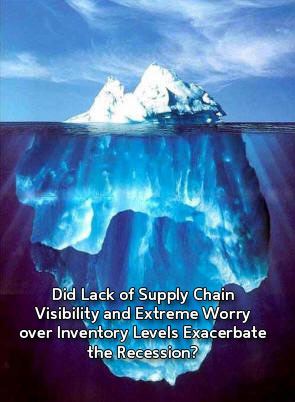Electronics retail giant Best Buy supports that view. According to an article last week in the Wall Street Journal, Best Buy’s merchandizing chief Michael Vitelli said the company could have sold more electronics equipment over the past few months, but substantial inventory and product cuts by suppliers led to higher than expected stock-outs at the stores – at a time when most manufacturers were anxious for any sales dollar they could find.
The technology sector, it turns out, seems to be especially vulnerable to these wild swings. It’s an industry that can be subject to strong variation in demand even in good times based on rapid product lifecycles and changes in buyer-seller agreements. Combine that with the intense concern in the sector about being caught with too much inventory, ala Cisco's infamous 2001 write down of $2.25 billion in inventory (see The Greatest Supply Chain Disasters of All Time), and you have a recipe for pullbacks that, in many cases, go too far or become self-fulfilling prophecies.
 In many cases, high-tech companies slammed on the brakes in hopes that rapid cost and inventory reductions might enable them to become one of the few in a product supply area to survive that recession. In many cases, high-tech companies slammed on the brakes in hopes that rapid cost and inventory reductions might enable them to become one of the few in a product supply area to survive that recession.
“As the contraction raced down the supply chain, its effects became amplified,” Rick Tsai, CEO of chip manufacturer Taiwan Semiconductor Manufacturing Co., is quoted as saying in the WSJ piece.
Sort of like a Bullwhip Effect in reverse. He said that in Q4 of 2008, consumer purchases were down 8%, final goods shipments were down 10%, and component orders were down 20%. Both those last two numbers go directly into GDP calculations, ratcheting up the negative economic news beyond that at the consumer level alone.
The increasingly complex and just-in-time supply chain world also plays a role. In the high-tech chain, for example, it is still difficult to see what's going on just a few links away, or where product is really moving. Chip designer Zoran, for example, recently found one batch of chips it thought was going for DVD players were used to make digital picture frames instead – making its ability to forecast and understand demand fraught with challenges.
With so many products going digital (e.g., the aforementioned picture frames), it makes it very difficult for many high-tech players to see or understand what is really happening across all those SKUs and channels.
Add to that challenge issues with cycle times. The Wall Street Journal story says that Best Buy, for example, places orders with finished goods suppliers about six weeks before it expects the goods on the shelf. But manufacturing and logistics cycle times may be twice that long, meaning large bets on inventory levels have to be made.
Managers at the final point of sale, such as Best Buy, will often be hunkered down in their own world, trying to make guesses in terms of inventory levels. The crisis mode or general relationship issues may mean little information is really shared with suppliers, who are left making production and inventory guesses with even less insight than the retailers.
The good news out of all this is that it means when consumer demand does pick up, overall economic recovery may be even sharper, as manufacturers play a catchup game with inventories.
But these stories also indicate that in terms of the integrated supply chain, we have a lot more room to go.
Do you think some companies have over shot production and inventory cuts on the downside? What do these stories say to you about where we are at in terms of supply chain visibility and integration? Let us know your thoughts at the Feedback button below.
SCDigest is Twittering!
Follow us now at https://twitter.com/scdigest |